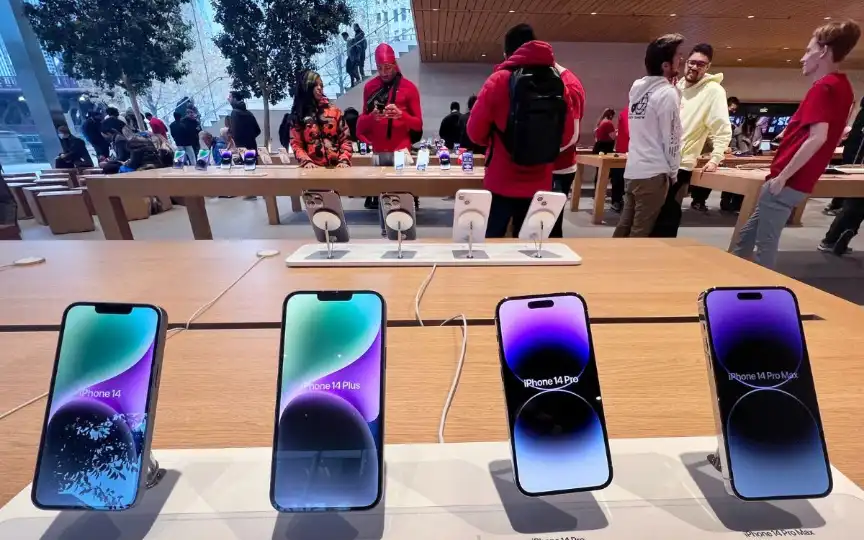Explained: How the New Apple iPhone Series Incorporating ISRO’s NavIC Will Impact India’s GPS System
After the launch of the latest iPhone series, Apple has confirmed that the premium smartphones will support India’s indigenous navigation system NavIC (Navigation with Indian Constellation). Addressing this milestone during India’s ‘Techade’, Minister of State for Electronics and IT Rajeev Chandrasekhar said that all smartphones will be powered by NavIC by the end of 2025.
Apple has introduced NavIC after other brands such as Xiaomi, Poco, Oppo, Vivo and OnePlus have already included the system in some of their models.
Chandrasekhar hinted that the government may offer cashback incentives to smartphone companies that use Indian-designed or Indian-made NavIC chips. This is in line with the Production Linked Incentive (PLI) scheme already announced by the government for the IT hardware industry. The minister also noted that the Indian company Accord Software & Systems has developed NavIC chipsets that enable car manufacturers to integrate NavIC into their in-built navigation system.
However, Chandrasekhar clarified that the government wants smartphones and cars to use NavIC in addition to other GPS systems such as US GPS, Russia’s GLONASS, EU’s Galileo, China’s BeiDou and Japan’s QZSS.
NavIC Facts
NavIC was developed by the Indian Space Research Organization (ISRO) and was first approved in 2006. The system was supposed to be completed by the end of 2011, but was not put into operation until 2018. Many experts have stated that while NavIC looks similar to GPS, it has some advantages such as better accuracy in urban areas and under dense foliage.
The inclusion of NavIC in iPhones and other smartphones is expected to make it easier for Indian users to access accurate location-based services such as navigation, mapping and tracking. It also helps improve the reliability of these services in areas where GPS signals are weak or unavailable.
While the addition of NavIC to smartphones is seen as a move that will further increase system adoption and help make it a more widely used navigation system, the development of NavIC chipsets for cars is also a positive step.
It is believed that this change will allow car manufacturers to integrate NavIC into their built-in navigation system, providing users with more accurate and reliable location-based services.
Overall, the inclusion of the system in smartphones such as the iPhone 15 Pro and iPhone 15 Pro Max and in cars is a major development for India’s space program and the country’s navigation technology. Experts also believe that it is a step towards making India more self-sufficient in navigation and towards providing better location-based services to users.
Here are some potential benefits of NavIC in smartphones and cars:
- Better accuracy: NavIC is more accurate than GPS in urban areas and under dense foliage. This can be particularly useful for navigation applications and tracking services.
- Better reliability: NavIC is less sensitive to interference from buildings and other obstacles than GPS. This can be especially useful for navigating in rural areas and countries with weak GPS signals.
- Lower power consumption: NavIC chipsets are designed to consume less power than GPS chipsets. This can be useful for smartphones and other mobile devices with limited battery life.
- Improved safety: NavIC is a regional navigation system that is not on par with GPS interference. This could make it safer to use in critical applications such as autonomous vehicles.
Rohan Verma, Managing Director and Executive Director, MapmyIndia, told ReturnByte, “This move by the government to ask mobile phone and car OEMs to incorporate NavIC is fantastic and we at MapmyIndia welcome this effort to promote self-reliance and indigenization in this area of positioning technology. . Locals solutions like MapmyIndia and our consumer app Mappls, which are at the cutting edge of this positioning technology, will further enable indigenization and self-reliance in this mapping and geospatial space.”
“MapmyIndia has been actively supporting and supplying NavIC-enabled IoT devices for vehicle fleets and working closely with ISRO to build a NavIC application optimized for use by fishermen, which Prime Minister Narendra Modi spoke about at Mann Ki Baat,” he noted.




